“Why, I oughta”
For years employees would say this, and managers laughed. The leverage was the bosses to wield. Today it’s different. There has been a seismic shift in power. The employee can easily find a new job, they can find more money, and most likely improve their working conditions. What are you doing to make sure those that are quitting other places, are coming to you? What are you doing to stop the bleeding of your employees?
Are you the preferred destination, or a waypoint?
When you go on vacation, sometimes you break it up into steps. Your preferred destination might be Disney World, but along the way you might stop for a day in Knoxville or Atlanta. Those are waypoints in your journey. You get your tank filled up, might see a few sights in the area, but you have no intention of making this your final destination.
Think about your current and future employees today the same way. Your business is one or the other. The jobs you are offering are either stepping stones, or the pinnacle career spot. It really is your choice on how you craft those expectations and experiences.
Let us say for example that your workforce truly is one that is transitional. You know your team members are there only to get thru college, or until their children go off to school, or even a seasonal type job. Just like a stayover in Knoxville, what can you do to have them stay an extra day or so? Knoxville now has Gatlinburg and Dollywood attractions that keep those vacationers a day or two longer. The majority of those coming through will keep going, but some will consider the experience their final destination.
What can you do to keep your team together for the optimum length of time? What can you do to increase their stay, or even make you their final destination?
Costs to consider in hiring
Hiring and training any new employee, even the most entry-level, takes time and money. You lose efficiency, they make mistakes, they take up your time asking questions. The cost of hiring an employee goes far beyond just paying for their salary to encompass recruiting, training, benefits, and more.
Small companies spent, on average, more than $1,500 on training alone, per employee, in 2019.
Integrating a new employee into the organization can also require time and expenditures.
It can take up to six months or more for a company to break even on its investment in a new hire. If your entry level positions start at $15 an hour, that is $15,000 you’ll spend (6-months) before you break even
You could be losing customers, quality & speed of service is slowing down, and the non-quantifiable costs continue to increase.
Conduct “stay interviews” not exit interviews
Let them go if they want to … but don’t wait until people are leaving to investigate what could have inclined them to stay. Talk to employees now about what’s going well, what pain points they’re experiencing, and what could be done to take the relationship to the next level. Stay interviews enable you to address problems and unfulfilled wishes before they drive people out the door.
The main thing to find out is why they are leaving. Are they leaving your pub so they to be a waiter at a fine dining establishment that offers higher tips (more money). Does your line cook really want to be a chef? Is your sales clerk at your marketing company leaving for what they believe to be a more professional job in sales with more benefits?
Employee development means more than improving the skills that you need them to have. Offering them opportunities to grow in all areas of their life could be a reason they stick around a year or two longer at your place. They become a better team member by being more engaged. Happy employees lead to happy customers.
What attractions do you need to add?
What’s your Bollywood? How can you get an employee to stay just a little longer? In the end, a waiter is a waiter, and there is only one managers spot to offer. If you have an industry average 20-25% turnover rate annually, do you know what your savings would be if you cut that in half? Those extra few months they stay, or maybe one more year, could save you thousands annually.
We believe that you need to continuously engage with your team to find out what they are looking for. Maybe they want to have a side-gig. If so, help them and pay for the class, workshop, webinar or whatever it is. Become a customer of theirs if they have a service that you need as well, even if you can get that a little cheaper from somewhere else - it becomes an investment.
If your line cook wants to be a chef, let them help you create the menu. Teach them how to develop the dinner, the pricing, and the profit structure. Provide them with more than delegated duties, empower them to be creative.
The famous Richard Branson quote that he penned in 2014 goes “Train people well enough so they can leave, treat them well enough, so they don't want to”.
We wrote a few days about about being “for” something, and making sure you customers know what that is. Your team members are equally important in this equation. If you want your customers to be happy, then you should first focus on the employees satisfaction. If you want your customers experience to have no friction, than we need to empower your team and make their days smoot.
As of February 2022 the Department of Labor statistics show about 2 open jobs for every one person unemployed in the US. This underscores the importance of keeping your team together as long as possible. When your team member is screaming “why I oughta” quit and go somewhere else - this is no longer an idle threat. It’s your job to keep them from even thinking this.
What things should you focus on?
Pay is number one. Are your wages & benefits competitive with the next best alternative job for those workers
Flexible; are your policies and procedures too rigid or less flexible than the next best alternative job
Are you know for developing employees or do you only teach skills that benefit your organization
What is your turnover rate compared to your closest competitors
Employees work-life balance
Creating a career pathway
Who knows, after your analysis it might be worth putting a roller coaster in your parking lot to keep them around a while longer. At the Kole Performance Group, we can help you find out what matters - it may be hard work today, but it will lead to a better tomorrow.
We are trying to grow our readership, please share this to your LinkedIn and other Social Media accounts!



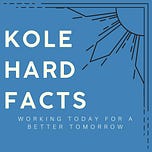





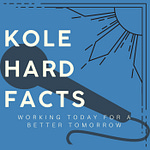
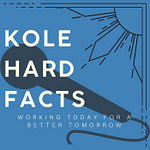
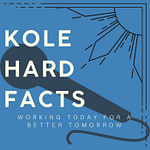

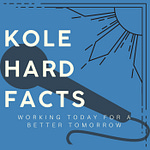
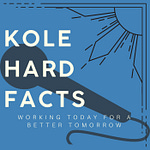
Share this post